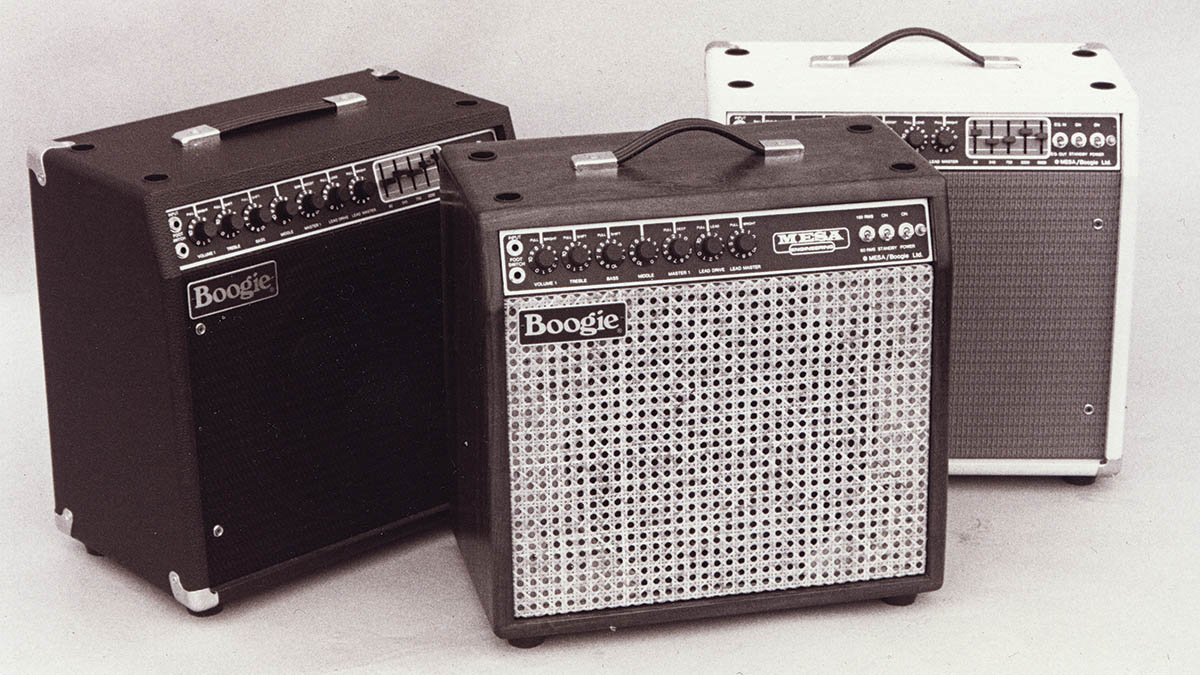In praise of the 1984-85 Mesa/Boogie Mark IIC+, the high-gain boutique amp behind rock and metal’s holy grail tones
It's the amp of James Hetfield's rhythm tone and Steve Lukather's leads, and as it ascends into the digital afterlife as a Neural DSP plugin, we revisit the legendary design to unpack its magic

The Mesa/Boogie Mark II model introduced in late 1978 represented a major milestone in the evolution of modern guitar amplifier design with its channel switching and cascaded high-gain preamp.
However, the amp wasn’t quite perfect, and over the years Mesa/Boogie performed numerous upgrades based on input from guitarists that led to the Mark IIB, Mark IIC and the final version, the Mark IIC+. Because the new Mark III model was already well in development by the time the Mark IIC+ was introduced in January 1984, the IIC+ was short-lived, produced for only 14 months until March 1985.
Typical of Mesa/Boogie Mark Series amps, the IIC+ was offered with a dizzying assortment of options. The base models were 60-watt heads or combos, but buyers could upgrade to 100 watts and add a graphic EQ, reverb, SimulClass and other options. Mesa also offered the 300-watt Coliseum model designed for bands that typically played arenas and stadiums.
Mesa built fewer than 3,000 Mark IIC+ amps, including 56 Coliseum models, but many Mark IIC and even a few Mark IIB amps were upgraded to C+ specs. And then there is the infamous Mark IIC++ version, featuring a custom factory upgrade that provided additional gain.
The Mark IIC+ is beloved for its dazzling dynamic clean tones, smooth singing compressed high-gain solo voices and its gut-punching maximum gain metal rhythm tones. Most of the amp’s “holy grail” status is due to its use on Metallica’s Master of Puppets, although James Hetfield and Kirk Hammett had IIC++ models and employed Aphex EQF-2 semi-parametric EQs and Aphex CX-1 Compressor/Gates in the effects loop for tone-shaping “secret sauce”.
The IIC+ was also a mid-’80s favorite of first-call L.A. session players like Mike Landau, Steve Lukather and Dean Parks, and it was Prince’s amp of choice for his 1984 Purple Rain tour and beyond. The IIC+ has remained a mainstay of John Petrucci’s rig with Dream Theater as well, which Mesa recently honored by issuing its very first artist signature amp, the JP-2C Mark IIC+ model.
• James Hetfield rhythm
Volume 1: 9, Treble: 7, Bass: 1.75, Middle: 4, Master 1: 4.5, Lead Drive: 6, Lead Master: 3, Presence: 2, Graphic EQ: In, Full Power, (Graphic EQ) 80Hz: +4dB, 240Hz: -2dB, 750Hz: -8dB, 2200Hz: -2dB, 6600Hz: +4
• Steve Lukather solo
Volume 1: 5, Treble: 6, Bass: 1, Middle: 7, Master 1: 3, Lead Drive: 5, Lead Master: 4, Presence: 3, Graphic EQ: In, ½ Power, (Graphic EQ) 80Hz: -4dB, 240Hz: +2dB, 750Hz: +8dB, 2200Hz: +4dB, 6600Hz: 0dB
Thanks to its appearance on numerous legendary recordings and its limited production, the original Mark IIC+ remains the most coveted and valuable Mesa/Boogie amp ever made.
All the latest guitar news, interviews, lessons, reviews, deals and more, direct to your inbox!
Prices have soared in recent years – Reverb.com listings range from $5,000 for a basic 60-watt combo to $15,000 and up. Lukather’s Mark IIC+ Coliseum recently sold for $20,000. The Mark IIC+’s predecessor the Mark IIB and its immediate successor the Mark III (black stripe version) offer similar tones, but their prices have also increased significantly.
The JP-2C Mark IIC+ offers genuine IIC+ tones plus a plethora of modern upgrades, including three truly independent channels, that make it a satisfying alternative. Mesa’s Mark V series amps from the Mark V Medium Head to the Mark V:25 Head also offer Mark IIC+ modes that sound very close to the original.
In March 2023, Neural DSP launched a Mesa/Boogie Mark IIC+ plugin suite, digitizing the legendary head for a new generation of players.
Chris is the co-author of Eruption - Conversations with Eddie Van Halen. He is a 40-year music industry veteran who started at Boardwalk Entertainment (Joan Jett, Night Ranger) and Roland US before becoming a guitar journalist in 1991. He has interviewed more than 600 artists, written more than 1,400 product reviews and contributed to Jeff Beck’s Beck 01: Hot Rods and Rock & Roll and Eric Clapton’s Six String Stories.

